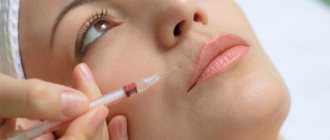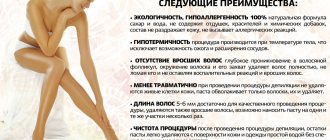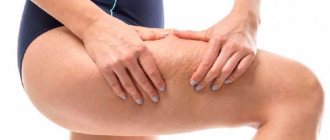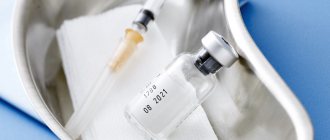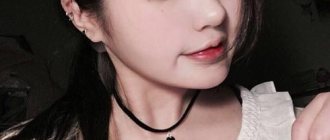The pregnancy period is a time when all processes in a woman’s body are subject to change. But the desire to always remain beautiful is unchanged at any time.
All that remains is to look for ways that are safest for the unborn child.
The most pressing problem for all expectant mothers is increased body hair.
There is still active debate about this. Advice! When in doubt, always consult your doctor.
In the initial stages, it is better to play it safe several times. Some believe that during pregnancy it is better to use a razor and not resort to any kind of depilation. Others believe that beauty is not complete without sacrifice. And if necessary, all sorts of procedures for removing hated hair will still be tried, despite the interesting situation. Both opinions are quite categorical.
What can you say about hair removal with sugar paste? Is sugaring allowed during pregnancy?
Is it possible to do sugaring in the early stages of pregnancy?
Reviews from women who have repeatedly undergone sugaring indicate that it is somewhat painful. This is understandable, given the nature of hair removal. Sensations in the bikini area, which is characterized by good blood supply and innervation, can be especially unpleasant.
When turning to the sugaring procedure in the early stages of pregnancy, you should take into account all the factors that may aggravate the procedure. Despite the fact that pregnancy is a physiological process, this period is characterized by hormonal changes. The unstable psychophysical state of a woman helps to lower the pain threshold. In such conditions, the sensations during sugaring will be even less pleasant, and it is undesirable to carry out it. The procedure can be especially dangerous if it is a large area, such as the legs, or an area of increased sensitivity. A more loyal attitude towards the possibility of carrying out the procedure in the event that it is necessary to remove hair in a small area, such as the area of the upper lip.
How long can you remove hair with sugar?
Trying to look attractive during pregnancy, many resort to depilation. Cosmetic manipulations improve mood, and positive emotions have a beneficial effect on both mother and child. In order not to harm the baby, you need to avoid sugaring in the first trimester. Starting from the second trimester, you can do sugar depilation without fear.
Changes in hormonal levels in the second trimester help reduce pain, so this period is considered ideal for sugar depilation.
Starting from the second trimester of pregnancy, the expectant mother can undergo sugar depilation, and changes in her hormonal levels will help reduce pain during the procedure
Sugaring in late pregnancy
Additional stress for the body in late pregnancy is extremely undesirable; this period is not the best time to carry out the sugaring procedure. Any negative factors, strong emotions, pain can lead to increased blood pressure and the development of uterine hypertonicity. As a result, the threat of premature labor cannot be ruled out. It is very dangerous if the situation develops in this way during the 8th month of pregnancy. Salon masters, understanding their responsibility, do not perform sugaring in late stages of pregnancy; they try to convince the woman to postpone the procedure by contacting her after childbirth.
Benefits of sugaring
There are a lot of hair removal methods, but sugar depilation is in particular demand among pregnant women. And that's why:
- shaving requires very frequent use and gives a very short-lived effect, plus irritation and ingrown hairs are a common reaction;
- depilatory creams - work gently and painlessly, but can cause allergies due to their unnatural composition and also provide an effect for 1-2 days;
- laser and photoepilation are prohibited during pregnancy;
- electrolysis is very painful, inconvenient to do in some areas, causes severe irritation and ingrown hairs;
- waxing is carried out with hot wax, which is very undesirable for pregnant women, because... gives side effects, is quite painful and dries out the skin;
When sugaring:
- sugar paste with a natural non-allergenic composition is used;
- it is applied warm, not hot, which eliminates thermal effects;
- done in small sections on any, even complex, area;
- less painful than other types of hair removal;
- the skin after it is moisturized and hairs do not grow in;
- the effect lasts 3-4 weeks;
The method has many advantages, which is why it has gained popularity among many women, including those who are expecting a baby.
Features of sugaring different areas during pregnancy
The most optimal time for sugaring during pregnancy is the second trimester. However, when considering carrying out the procedure even during this period, you should carefully study all the accompanying circumstances. The main factor that affects the possibility of sugaring during pregnancy is discomfort. The larger the surface area being treated, the longer the woman will experience pain.
Depilation of any area of the face will take a few seconds. Moreover, you should not worry about the progress of the procedure if the woman has performed it several times before and the skin is accustomed to such effects. For large areas, the attitude is somewhat different, since hair removal on the legs or arms will take longer. An individual approach when deciding on the possibility of sugaring during pregnancy is a priority. The situation will be weighed especially carefully if it is necessary to carry out the procedure in the bikini area or intimate area.
What is sugaring and how does it work on hairs?
The name of the sugaring procedure comes from the English sugar (sugar), and this method is often called sugar or Persian hair removal. To remove hair during sugaring, a special caramel paste is used. This method of getting rid of vegetation has been popular for many centuries, which confirms its effectiveness.
When sugaring, sugar paste is applied against hair growth. This is a prerequisite for the procedure and only with this application can it completely cover the hairs. Next, the paste is removed with a sharp movement along the hair growth along with the vegetation, and the treated area instantly pleases with smoothness.
Sugar paste for hair removal is always applied against hair growth and removed in its direction.
Being on the skin, the paste envelops the maximum number of hairs, including the thinnest and shortest ones, sticking tightly to them. That is why sugaring is applicable for epilation of any parts of the body and face, including the armpits and deep bikini area. Caramel paste can not only cover the hairs above the skin, but also partially penetrate into the mouth of the follicle, ensuring a tight grip of the hairs on the treated area.
Sugaring is not a radical hair removal method, and the follicles are not destroyed during the procedure, therefore, depending on the individual intensity of hair growth, repeated manipulation is required. On average, the interval between sugaring sessions is 3 – 6 weeks.
Regular sugaring leads to gradual thinning of hair and a significant slowdown in its growth, so over time the procedures can be performed much less frequently.
The sugaring procedure consists of several stages:
- Cleaning and degreasing the skin. Such measures are necessary not only to eliminate excess contamination, but also to disinfect the treatment field, since after removing the hairs, the pores remain open for some time and infection can enter them.
- Preparing the paste. Before use, a small amount of sugaring product must be thoroughly kneaded in your hands and warmed up. When the paste reaches the desired consistency, it is applied to a small area of skin with stretching movements and immediately removed along with the hairs.
- Post-procedural processing. When all the hairs have been removed from the selected area of skin, you need to wipe it with an antiseptic and apply a soothing agent.
To obtain a paste of the desired temperature and consistency, knead it thoroughly in your hands
In addition to the effect of getting rid of hair, the sugaring procedure is also a peeling, because dead cells are also removed along with the hairs. As a result of hair removal with sugar paste, the skin becomes smooth and velvety.
An important condition for the effectiveness of hair removal when choosing sugaring is the quality and consistency of the paste. The composition can be purchased commercially or prepared independently.
The consistency of sugar paste can be either ultra-soft or hard, depending on the technique of performing the procedure and the stiffness of the hair: the denser the hair, the harder the paste should be.
Contraindications to sugaring during pregnancy
Each method of hair removal has certain disadvantages, and if in everyday life they are not particularly significant, then during pregnancy they become reasons to abandon one or another method of hair removal. Even with regular shaving, cuts are possible and there is a risk of infection in the wounds; depilatory creams consist of strong chemicals and are not suitable for use during pregnancy, and you really want to look attractive and have smooth skin during this period.
Sugaring does not have the disadvantages of other hair removal methods, but it is not always applicable during pregnancy.
If before pregnancy a girl has already undergone sugaring and is very familiar with it, then she can safely remove hair in this way in the future in the absence of medical contraindications.
Contraindications for sugaring during pregnancy include:
- any pathologies of pregnancy;
- uterine tone;
- pregnancy diabetes;
- phlebeurysm;
- diseases of the endocrine system;
- tendency to skin irritation;
- toxicosis and poor health;
- formation of bleeding wounds after hair removal;
- intense pain during hair removal.
If there are no direct medical contraindications and you have received permission from the doctor monitoring the pregnancy for sugaring, it is important to listen to your own feelings during the procedure.
Sugaring involves pulling out hairs from the skin along with the root, and this process is quite painful. Moreover, during the procedure, the flow of blood to the hair removal area increases, which can provoke a number of unpleasant consequences:
- uterine tone;
- uterine contractions;
- miscarriage.
Cases of spontaneous abortion are not mentioned in medical statistics and literature, however, if there is a threat of miscarriage and a complicated medical history, sugaring should be abandoned, especially in the first trimester.
If the sugaring procedure is familiar to a pregnant girl, but causes her anxiety associated with pain, it is better to refuse hair removal. Stress hormones influence the intrauterine development of the fetus and the formation of its nervous system.
It is also worth considering that not every sugaring master agrees to work with pregnant clients. It is advisable that the specialist has experience working with pregnant girls and relevant knowledge about precautions during this period.
Sugaring of a deep bikini during pregnancy
Maintaining the aesthetics of the bikini area on your own during pregnancy, especially in the last stages, is a very difficult task for a girl. That is why most ladies are concerned with questions: is it possible to sugar the intimate area in an interesting position and what are the risks of such a procedure.
New clients in this position who have not previously resorted to the procedure of removing hair with sugar paste will most likely be turned away from the salon.
Epilation of the bikini area still causes active debate among doctors. Most obstetricians and gynecologists agree that it is better to remove hair in the intimate area during pregnancy with a razor.
During sugaring of the bikini area, the girl has to lie on her back for quite a long time, which during pregnancy is not very pleasant or useful, since the fetus puts pressure on all internal organs and the spine
The body's reaction to hair removal in the intimate area can change dramatically with the onset of pregnancy, and if previously sugaring did not cause discomfort, now it can cause severe pain. Against the background of a stressful state, the level of adrenaline in the body increases, the heartbeat quickens, the tone of the uterus increases, which means a miscarriage is possible. In this way, a woman's body may respond to pain by deciding that in order to survive the danger, it must get rid of the fetus.
There are certain symptoms that, if detected, bikini sugaring should be stopped immediately:
- unusual sensations in the abdomen;
- bloody issues;
- nagging pain in the abdomen or lower back;
- dizziness;
- increased heart rate;
- uterine tension.
Sugaring before childbirth
Before going to the maternity hospital to meet the baby, the expectant mother strives to tidy up her body by removing excess hair from it. Moreover, modern medicine requires the absence of hair in the bikini area for natural resolution. If you do not have time to shave yourself before giving birth, the midwife will depilate the expectant mother. That is why, a week before the expected date of birth, many girls come for sugaring in order to prepare in advance.
Hair removal during pregnancy, especially in the last stages, is also fun. As a mother of two children, I am well aware of how difficult it is for girls, especially when it comes to removing hair from their bikini area before giving birth. During my first pregnancy, sugaring was not yet so popular, and I struggled with excess hair exclusively with a razor. With the onset of my second pregnancy, I already tried and fell in love with sugaring, especially for intimate hair removal, and in the summer, when there is no desire to shave my hair every day at all. However, the course of my pregnancy was not at all rosy, I had to deal with toxicosis, tone, and the risk of miscarriage, so going for sugar hair removal was contraindicated. As the birth approached, my condition returned to normal, and I agreed with the specialist about the procedure. I did sugaring of my legs, armpits, and arms, since for me the pain in these areas is minimal. I refused sugaring of the bikini area by mutual agreement with the cosmetologist due to significant discomfort during the procedure and the complete inability to lie on my back due to my too large belly. Before giving birth, I had to shave the old fashioned way, in a hurry and with a mirror, but the main thing is that the baby was born healthy and I did not harm her with my beauty procedures.
Restrictions on the procedure
If a woman first turns to sugaring during pregnancy, with a high degree of probability, the specialist will recommend that she postpone the procedure. The requirements for a woman who has repeatedly undergone sugaring before are less stringent. However, even in this case, the master will undertake the procedure only if there are no restrictions. Contraindications for sugaring during pregnancy are:
- a history of cases of premature termination of pregnancy;
- pathological course of the current pregnancy;
- toxicosis;
- low pain threshold;
- arterial hypertension;
- microtraumas at the site of intended impact;
- chronic diseases in the acute stage, as well as acute processes accompanied by malaise and increased body temperature.
At the same time, experts have developed the following tactics: if a pregnant woman’s condition worsens during sugaring, the procedure should be stopped.
Introduction to the procedure
Epilation - combines several methods of removing unwanted hairs along with the roots. Sugaring, otherwise sugar depilation (aka caramel depilation) - removing them with sugar paste. This is a gentler option for hair removal than electric or wax. The effect of smooth skin pleases a woman for 3-4 weeks.
The procedure is carried out using sugar paste. The composition of the paste is absolutely natural - water, sugar, lemon juice. You can prepare it at home and carry out the procedure yourself, or come to the salon, where a professional master will perform it with special salon products for sugaring.
It is not recommended to perform sugaring for the first time during pregnancy, since the body can react unpredictably to it, and a woman’s sensitivity increases greatly. Although the speed of hair growth and its quantity may increase. Perhaps right now it is better to allow yourself to go to a good salon with an experienced cosmetologist who will definitely do everything correctly and delicately. It is important to inform him of your special situation in advance.
The classic sugaring procedure looks like this:
- The desired area is peeled.
- Then treatment with an antiseptic (Chlorhexidine is suitable).
- A cream or solution containing a local anesthetic is applied. These are Lidocaine, Emla cream, Ane stop gel, etc. Pregnant women are not recommended to do hair removal without any pain relief, especially in areas of increased sensitivity. A side effect may be an increase in uterine tone and the threat of miscarriage or premature birth (more about pain relief during sugaring -).
- After removing the layer of ointment, it is advisable to treat the hair removal area with powder or talcum powder before applying the paste; this will improve the adhesion of the paste to the hairs and reduce the adhesion to the skin.
- Sugar paste heated to body temperature is applied to a small, approximately 2x4 cm area of skin, opposite hair growth.
- Remove either manually or with a strip of paper placed over the paste, with a sharp movement in the direction of hair growth.
- After removing the paste, the skin area is treated with Chlorhexidine and after a few minutes the skin must be moisturized. A healing ointment with Panthenol, Aloe gel, or just moisturizing milk will do.
- The next procedure will be needed only after 3-4 weeks. During this period, you need to regularly exfoliate and moisturize the skin to prevent irritation and ingrown hairs.
Precautions and general recommendations
In order to carry out hair removal in a pregnant woman as safely as possible, experts recommend adhering to several rules:
- the length of the hair should be at least 5 mm, which will ensure maximum contact with the paste and facilitate the removal process;
- the procedure is excluded in case of fresh tanning in the area of future hair removal;
- After completing the procedure, it is necessary to treat the affected area with a gel with a soothing and anti-inflammatory effect.
To ensure the safety of the entire procedure, an individual approach is important. The specialist must take into account the woman’s experience in removing excess hair, the techniques she used previously, and her feelings during the procedures. The specialist will be required to competently assess all the risks associated with her current condition. In some cases, he will tactfully recommend refraining from carrying out the procedure.
Contraindications
During pregnancy, sugar depilation is prohibited if:
- An allergic reaction to the constituent components of sugar paste is observed. In addition to discomfort, possible itching and burning, you will need to take antihistamines, which are not beneficial for pregnant women;
- If a pregnant woman has diabetes. With this disease, skin cells are poorly regenerated. Sugaring can provoke the appearance of microtraumas that will take a long time to heal;
- For varicose veins, the procedure is a contraindication. It is allowed to do hair removal for mild varicose veins, with the approval of a doctor;
- Wounds, skin diseases, inflammatory processes in the treated area can worsen the condition of the skin;
- In case of a difficult pregnancy, complications, toxicosis, or poor health, hair removal should be postponed;
- The first month of pregnancy is often a ban on bioepilation.
The answer to the question whether sugaring can be done for pregnant women is yes. The right time for sugaring and the good health of the expectant mother will allow you to maintain your body in ideal condition throughout the entire period of pregnancy. After sugar hair removal, the skin remains smooth for a long time. Choosing an experienced professional and paying attention to your well-being during hair removal will make the procedure safe for both mother and child.
Is it possible to do sugaring during pregnancy: pros and cons
Any obstetrician-gynecologist will confirm that the presence of hair in the bikini area and intimate area during childbirth is undesirable. However, it will be difficult to independently shave them immediately before childbirth. In addition, in this case, the development of inflammatory processes or even pustular lesions cannot be ruled out. Embarrassment often prevents you from trusting health workers.
It should be taken into account that of all existing methods of hair removal, sugaring is the safest and most painless, and therefore preferable during pregnancy. Laser hair removal or waxing during this period is generally excluded.
If you choose the right time for sugaring, the second trimester, then in the absence of contraindications at the time of the procedure, hair removal can be successfully carried out in any area. In this period, there are significantly more “pro” factors than when performing the procedure in the early stages or 7-8 months of pregnancy.
A few words about the procedure and its advantages
Sugaring is a type of depilation that involves the use of sugar paste and lemon juice.
The procedure can be carried out both in a beauty salon and at home. To prepare sugar paste, take 2 cups of sugar, half a glass of water and the same amount of lemon juice. You can read even more pasta recipes in the section on sugaring at home.
Then cook the mixture until it thickens and apply it warm to areas of hair. Strips are applied on top and then abruptly removed along with unwanted vegetation. Finally, a cream (lotion) is applied to relieve irritation.
Sugar hair removal during pregnancy - benefits:
- Environmental friendliness . The sugar paste contains only natural ingredients.
- Safety . During the procedure, the possibility of cuts and burns is excluded.
- Hypoallergenic . After sugaring, allergic signs occur in isolated cases.
- Compared to other types of depilation, the procedure using sugar paste is less painful .
- The risk of re-ingrown hairs after sugaring is quite small .
Reviews
According to doctors, sugaring, when carried out correctly, taking into account the duration of pregnancy and the woman’s condition, is a safe procedure. In addition, by removing hair immediately before giving birth, a woman will no longer need additional shaving in the hospital. Positive reviews from gynecologists are also based on the fact that with an individual approach, the desired effect can be obtained quite safely. Doctors only warn that if symptoms such as nagging pain in the lower back or tension in the groin appear, the procedure should be stopped.
The high level of qualifications of the masters and extensive experience make the SUGARME beauty salon the preferred place for any type of bioepilation. Here you can clarify the possibility of carrying out the procedure on a pregnant woman in each specific case.
Precautionary measures
Is it possible to do sugaring during menstruation?
The master is obliged to assess the condition and well-being of the client, and if there is severe pain, stop bioepilation. The client should immediately report any deterioration in health.
The procedure is stopped immediately if:
- The occurrence of nagging pain in the lower abdomen;
- If the baby starts kicking a lot;
- The abdomen hardens, the tone of the uterus increases;
- Heart rate increases;
- Unbearable pain.
What is the procedure?
Sugaring, a technique for removing hair using a sticky substance. Sugar paste can be purchased at the store or prepared at home. A homemade product is considered less harmful because it contains only natural ingredients.
The procedure is recommended when the hair length is at least 5 mm. Otherwise, the effectiveness of sugar depilation decreases. Before applying the sticky composition, the skin is cleaned of impurities, treated with an antiseptic and the paste is applied. It is distributed in the direction of hair growth, and then torn off the body with a sharp movement.
When the removal process is completed, the skin is cleaned of remaining sticky mass and treated with a special composition. The product after depilation soothes irritated epidermis, disinfects, and can also slow down hair growth.
Features of sugar hair removal during pregnancy
If a woman has no contraindications to sugar depilation, during pregnancy it is allowed to be performed in the second trimester and in the first half of the third.
Regardless of the location of depilation with sugar paste, the procedure technique remains the same. To make the process of hair removal easier, you should steam the skin before sugaring.
But pregnant women are prohibited from taking hot baths. You can prepare your skin for depilation using a hot towel. If a woman decides to undergo removal in the bikini area, it is better to refuse steaming. Heat can cause an increase in the tone of the reproductive muscle organ.
Deep bikini
The intimate area is considered the most painful area. Therefore, it is recommended to completely avoid sugaring a deep bikini during pregnancy. Complete hair removal in this area should also not be carried out due to the risk of genitourinary tract infection. If you follow all the rules for sugaring, such a complication rarely occurs, but the possibility of penetration of pathogenic microflora always remains.
Irritation may appear in the intimate area after the procedure. Against the background of physical discomfort, irritability increases. Nervousness can affect the tone of the uterus.
Legs
The sensitivity of the lower extremities is less than that of other areas. For this reason, this area is considered the safest for pregnant women who are trying to get rid of hair. Women who are not pregnant most often refuse to use anesthetics.
Armpits
The skin in this area is delicate. Against the background of hormonal changes that occur during pregnancy, sugaring can cause irritation. If a woman decides to undergo a painful procedure, she should strictly follow all the rules for care after hair removal. For better adhesion of the sticky substance to the hairs, it is additionally recommended to treat the epidermis of the armpits with talcum powder.
Anesthesia
Pregnant women should not use drugs that have an anesthetic effect. Many of the substances included in topical products are able to penetrate the bloodstream and pass through the placental barrier. They can negatively affect the intrauterine development of the fetus. For this reason, if a woman decides to undergo sugaring, she should be prepared for the procedure to be painful.
Skin care after the procedure
To avoid tissue infection and other complications, immediately after sugaring it is necessary to treat the epidermis with Chlorhexidine. This drug is safe and approved for use during pregnancy.
The woman's local immunity in the area of depilation will be weakened, so in the next 3-4 days you should carefully monitor the hygiene of the area where hair removal was performed and treat the skin with Chlorhexidine.
On day 6-7 you can scrub. For this you should use sea salt. Light exfoliation will remove dead skin cells and prevent ingrown hairs.
To moisturize the skin, you should choose cosmetics specifically designed for pregnant women. Among folk recipes, aloe works well. The plant juice or gruel obtained from the pulp of the leaves is applied to the epidermis, left for 15-20 minutes and washed off with water.
Advantages and disadvantages of the method for expectant mothers
The advantages of sugar depilation include:
- There is no need to carry out the procedure frequently. After sugaring, hair begins to appear after 3-4 weeks.
- Minimal tissue trauma.
- No ingrown hairs.
- Low likelihood of an allergic reaction.
- The method is suitable for women with sensitive skin.
After sugaring, the skin does not dry out, which makes this method of removal accessible to girls with a dry type of epidermis.
Sugar hair removal also has its disadvantages. These include:
- Painful removal. While carrying a child, it is not recommended to additionally use medications that reduce discomfort. In addition, most analgesics that are commercially available are not able to completely relieve pain.
- For various reasons, not all women can pull out their hair on their own. The process becomes more complicated as the belly gets larger. Therefore, sugaring at home is not available to everyone.
- Duration of the procedure. The time required for depilation will depend on the amount of work. For example, hair in the armpit can be removed within 5-10 minutes, and getting rid of hair on the legs takes 40 minutes.
- Hair length. To remove hair efficiently, you need to wait until its length is at least 5 mm.
- Difficulties in choosing the right store-bought paste or maintaining the correct proportions when preparing a sticky substance yourself.
Safe methods of hair removal for women during pregnancy
The most important rule for a woman expecting a child is not to try anything new. Epilation of the body and bikini area during pregnancy should be habitual in order to avoid allergic reactions, irritations, and pain that are undesirable during such a period.
So, the methods approved for pregnant women.
Mechanical epilator
Many girls are used to doing hair removal with a machine. There are no contraindications to this method for pregnant women. You can continue shaving your intimate area without any worries. Difficulties may arise in the last trimester due to a large belly. In this case, you can temporarily resort to other methods or visit a cosmetologist.
It is not recommended to start using the machine during pregnancy for those who have not done this before. The first 2-3 times the process will cause severe pain, which will result in stress for the body. In addition, an inflammatory skin reaction is possible. Therefore, the method is suitable only for those who have been using it for a long time.
Waxing
Wax (wax) is a highly hypoallergenic product and does not contain hazardous chemicals. You can epilate a bikini while in position using this method. If a woman is used to doing this on her own, then she will easily cope until her belly begins to grow. Do not take uncomfortable positions and squeeze the fetus. When it becomes difficult to do waxing at home, it is better to go to a cosmetology office.
As in the case of a mechanical epilator, wax depilation should be done only by those who have resorted to it before, otherwise a painful shock is possible, which is very bad for the nervous system of a pregnant woman.
Sugarnig or phytoresin
The method is depilation with sugar paste consisting of natural ingredients, which means it is a suitable way to get rid of hair for pregnant women. The paste is cooked using sugar. It is absolutely safe for the body. The process is less painful compared to wax and machine. Even those girls who have never done it before can start doing bikini hair removal. The same applies to bioresin. Let's take a closer look at this issue, look at the nuances from a medical point of view, and learn for sure about the safety of sugaring during pregnancy from a specialist.
Medical opinion
While expecting a baby, the expectant mother may notice increased growth of body hair. This is due to an increase in the hormone progesterone in the body, so hair removal with sugar paste may be a solution for the expectant mother. Before sugaring, you should consult your doctor to avoid the following risks:
- Uterine tone. During sugar depilation, hair is removed from the root, which entails painful sensations. This can cause uterine tone and lead to miscarriage. This risk exists in the first and second trimesters. In III, the danger is minimal and even acceptable before childbirth.
- Introduction of pathogenic bacteria under the skin. There is such a risk when depilating with sugar paste..
From the master's point of view
The specialist must be aware of the client’s “situation” in order to assess all the risks before performing the procedure.
- This is not the first time that depilation has been carried out. For a woman who has been attending sessions for a long time, her hair becomes thin, brittle and weak. In this case, sugaring can be done with the permission of the doctor.
- The pregnancy is progressing well according to the gynecologist.
Skin care after sugaring
After the procedure, you need to help the skin recover as quickly as possible, avoid infection of damaged areas and moisturize. Actually, the care itself is half the success, both of the last epilation and the one that follows.
- Immediately after the procedure, an antiseptic (Chlorhexidine) must be applied to the skin. It is approved for use in pregnant women and will not cause irritation. But it will prevent the appearance of inflammation and pustules at the site of the removed hairs.
- For the first 3-5 days after sugaring, you should also treat the hair removal area with antiseptics, because healing while waiting for the baby may take longer than usual. And the woman’s local immunity is significantly reduced.
- From day 6, when the skin is restored and there is no inflammation, you can start doing peeling. It is better to use them natural - with salt or nut shells. This is important for preventing ingrown hairs. General thermal procedures are prohibited during pregnancy, so you can put a cloth moistened with warm water on the affected area and hold it for several minutes. After peeling, be sure to apply any moisturizing lotion or cream.
Panthenol ointment or Aloe gel are good options. You can also use any creams/lotions for pregnant women - they are softer in composition. It is optimal to do scrubs or peels once every 3-5 days before the next hair removal, this will prevent ingrown hairs.
Below are a few videos on the topic.
To do or not to do sugaring:
Harm of the procedure for a pregnant woman:
Advice from a sugaring master:
In conclusion, it can be noted that everything is individual. If you feel excellent and there are no abnormalities in the course of pregnancy, why not treat yourself to smooth skin? But if there are still problems and controversial issues, it is better to leave experiments and radical hair removal methods for the postpartum period. In any case, the child’s health outweighs all the pros and cons and the choice should only be in his favor. And when he is born, he will please his mother with his health!
Liked? Share with your friends!


